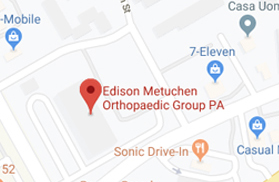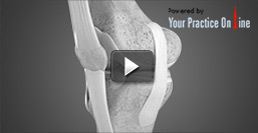Direct Lateral Interbody Fusion
The backbone or vertebral column is made up of tiny bones lined one above the other and cushioned by spongy intervertebral discs. Over the years, the discs undergo wear and tear, causing the vertebrae to painfully rub against each other every time we move and degenerate. Direct lateral interbody fusion (DLIF) is a minimally-invasive surgery that involves the removal of damaged intervertebral discs and bone, and fusing of two adjacent spinal vertebrae. It adopts a lateral approach when compared to traditional methods of spinal fusion techniques, and in doing so, spares the disruption of major back muscles, ligaments and bones, and preserves back strength.
Direct lateral interbody fusion is considered when pain medications, physical therapy or steroid injections fail to treat leg and back pain caused by any of the spinal disorders listed below.
- Degenerative disc disease (damaged discs between two vertebrae)
- Degenerative scoliosis (sideways curve of spine)
- Degenerative spondylolisthesis (slipping or dislocation of a vertebra)
- Recurring disc herniation (ruptured disc)
- Posterior pseudoarthrosis (previous failed fusion surgery)
- Post-laminectomy syndrome (spinal instability following non-fusion surgery)
- Adjacent level syndrome (condition that occurs next to previous fusion surgery)
The surgery takes about one hour and is performed under general anesthesia. You will be positioned onto your side. Using X-ray, your surgeon will locate and mark off the affected region. Through a small incision made in your flank, your surgeon will hold back the peritoneum (outer covering of abdominal organs) and will make a second incision on your side for instruments called tubular dilators to pass through. The affected disc is then removed, and replaced with bone graft, which will aid in the fusion of the adjacent vertebrae. Additional support may be provided by the insertion of plates, rods or screws. The instruments are removed and incisions stitched and bandaged.
Direct lateral interbody fusion ensures a quick recovery and lets you return to normal activities. As this approach does not damage muscles, ideally you will be able to walk the evening of the surgery and will be discharged the next day. Following your discharge, you will be prescribed medication for pain.
As with all surgical procedures, direct lateral interbody fusion may be associated with certain complications such as infection, damage to nerves, spinal cord or blood vessels, muscle weakness, and pain at the site of bone graft. There are chances of the implant failing to fuse the vertebrae together and a progression in the existing disease. Other conditions such as deep vein thrombosis, urinary tract infection, stroke and pneumonia may develop following the procedure.
Other Spine List
- Normal Anatomy of the Spine
- Back Pain
- Neck Pain
- Spine Trauma
- Vertebral Fractures
- Spine Injections
- Spinal Deformity Surgery
- Posterior Lumbar Decompression with Fusion
- Lumbar Microdiscectomy
- Spinal Cord Stimulator
- Anterior Cervical Decompression with Fusion
- Corpectomy
- Kyphoplasty
- SI joint fusion
- Oblique Lumbar Interbody Fusion
- Interlaminar Lumbar Instrumented Fusion
- Minimal Access Surgical Technology Transforaminal Lumbar Interbody Fusion
- Lumbar Epidural Steroid Injection
- Laminectomy (Cervical) with Fusion
- Posterior Lumbar Interbody Fusion
- Peripheral Nerve Surgery
 Menu
Menu






